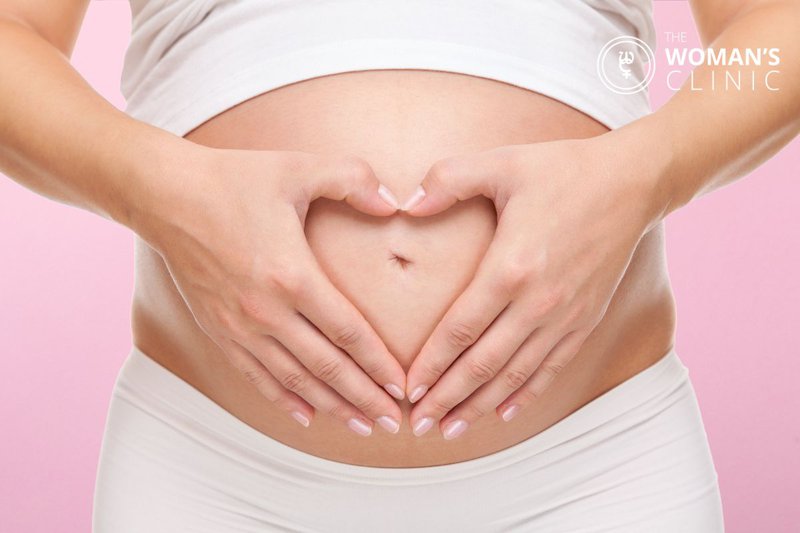If you’ve been told you have fibroids while pregnant, you’re not alone. These common growths can raise questions about pain, risks, and how they may affect your baby. As overwhelming as these things may sound, healthcare professionals have helped countless women safely manage fibroids during pregnancy. We’ll walk you through what fibroids can do, when to be concerned, and how to stay in control of your health and peace of mind.
Key Takeaways:
- Fibroids increase miscarriage risk (14% vs. 7.6% without fibroids).
- Larger or placenta-adjacent fibroids may cause early delivery, C-section, or growth issues.
- Most growth occurs in the first trimester, triggered by rising hormones.
- "Red degeneration" can cause sharp pain; typically treated with rest and acetaminophen.
- Symptoms include pain, pressure, cramping, bleeding, and trouble sleeping.
- Diagnosed via ultrasound; MRI used in select cases.
- Fibroids over 5 cm or near the cervix or placenta require closer follow-up.
- Natural relief: hydration, rest, warm compresses, prenatal yoga, nutritious food.
- Postpartum: 76% of fibroids shrink; options include medication, myomectomy, and UFE.
- Fibroids may lower conception or IVF success; surgery might improve outcomes.
- Watch for urgent signs: sharp pain, heavy bleeding, fever.
- Despite risks, over 70% of women with fibroids deliver full-term, healthy babies.

Understanding Fibroids During Pregnancy: Risks, Symptoms, and Care
If you’ve been diagnosed with fibroids during pregnancy, you’re not alone. Fibroids are non-cancerous growths that can develop inside or on the uterus, and they’re especially common in people of reproductive age. While many fibroids cause no issues at all, pregnancy can sometimes complicate things. Hormonal changes may cause fibroids to grow, shift, or interact with the placenta or baby’s position.
At The Woman’s Clinic in Little Rock, we’re here to help you understand the full picture so you can feel informed, supported, and confident throughout your pregnancy journey.
How Fibroids During Pregnancy Can Affect Outcomes
Fibroids can increase the risk of miscarriage, especially when they’re large or located near the placenta. Research shows that people with fibroids have a 14% chance of miscarriage compared to 7.6% in those without. The size, number, and location of fibroids matter most. If they grow in the upper or back areas of the uterus, they may push the baby out of position or interfere with proper growth.
Fibroids may also:
- Block the cervix or birth canal
- Interfere with contractions during labor
- Increase the chance of a C-section
- Affect the location or function of the placenta
Conditions like placenta previa (when the placenta covers the cervix) or placental abruption (when it detaches too early) are more likely with fibroids and require immediate medical attention. After delivery, fibroids may cause postpartum hemorrhage if the uterus can’t contract fully.
Still, many people with fibroids deliver healthy babies. If your fibroids are small or few, vaginal birth may still be an option. With the right prenatal care, most risks can be monitored and managed effectively.
Why Fibroids Grow or Change During Pregnancy
Fibroids are sensitive to hormones, especially estrogen and progesterone. During pregnancy, levels of these hormones rise quickly, particularly in the first trimester. This hormonal surge can cause fibroids to grow, sometimes by as much as 25%.
Most fibroid growth happens between weeks 1 and 12, then tends to stabilize. After delivery, many fibroids shrink naturally as hormone levels drop. In fact, about 36% of fibroids shrink within a few months postpartum.
In some cases, fibroids grow too fast and outpace their blood supply. This leads to red degeneration, a condition where the fibroid tissue breaks down and causes pain, fever, and tenderness.
Common Symptoms of Fibroids During Pregnancy
The most common symptom of fibroids during pregnancy is pain. It may feel like strong cramps, low in the belly, pressure, or discomfort when moving, urinating, or having sex.
Pain is more likely to occur:
- In the first trimester, due to rapid fibroid growth
- Within the second trimester, with red degeneration
- In the third trimester, as the baby and uterus press on fibroids
Other symptoms may include:
- Bloating or fullness
- Trouble sleeping
- Increased need to urinate
- Pain during bowel movements
If fibroids are located near the placenta, you may also notice spotting or light bleeding in early pregnancy. Always report bleeding to your doctor to rule out more serious concerns.
Managing Fibroid Pain and Discomfort Safely
Most fibroid-related pain can be managed with:
- Acetaminophen (Tylenol)
- Warm compresses (not hot, and never over the baby)
- Hydration
- Side-lying rest
Avoid ibuprofen after 20 weeks, as it may affect fetal development. Herbal remedies should only be used if your doctor confirms they’re safe.
For more tips, visit womenshealth.gov.
Nutrition and Lifestyle Support for Fibroids During Pregnancy
While diet can’t shrink fibroids, it can support your overall health and reduce inflammation. Focus on:
- Leafy greens
- Whole grains
- Fruits and legumes
- Vitamin D-rich foods like salmon, eggs, and fortified milk
Limit processed foods, red meat, and added sugars. These may contribute to inflammation and hormone imbalance.
Gentle movement, such as prenatal yoga or short walks, can improve circulation and ease discomfort. Practices like mindful breathing or meditation may also reduce stress and help you rest more easily.
Diagnosing and Monitoring Fibroids During Pregnancy
Most fibroids are discovered during routine ultrasounds or pelvic exams. If your provider suspects fibroids, they may use:
- Ultrasound (safe and effective during pregnancy)
- MRI, if more detailed imaging is needed
Monitoring frequency depends on your fibroids’ size, number, and symptoms. Typically, fibroids are checked once per trimester unless specific concerns arise.
Fibroids larger than 5 cm or located near the placenta or cervix may require closer monitoring. Your care team will use imaging and symptom tracking to guide your delivery plan.
Treatment Options During and After Pregnancy
Most people with fibroids during pregnancy won’t need active treatment beyond pain management and monitoring. However, if complications like severe bleeding or fibroid degeneration occur, hospitalization or closer care may be necessary.
After delivery, fibroids often shrink. But if symptoms continue, treatment options include:
- Medication: NSAIDs, hormonal birth control, or iron supplements
- Myomectomy: Surgical removal of fibroids while preserving the uterus
- Uterine Fibroid Embolization (UFE): Minimally invasive procedure to shrink fibroids
- Radiofrequency ablation: Uses heat to reduce fibroid size
- Hysterectomy: Full removal of the uterus, recommended in severe or recurring cases
Most doctors suggest waiting 3 to 6 months postpartum before pursuing surgery. This gives your body time to heal and for fibroids to shrink naturally.
Planning for Future Pregnancies After Fibroid Treatment
If you had fibroids removed and plan to get pregnant again, your doctor may recommend waiting a few months before trying. This allows your uterus to fully heal, especially after a myomectomy.
In some cases, a future C-section may be advised if your uterus was deeply affected by surgery. IVF success may also be affected if untreated fibroids press on the uterine lining, but removing them can improve outcomes significantly.
Even with fibroids, many people conceive naturally and deliver healthy babies. The key is understanding how fibroids affect your body and planning accordingly.
When to Seek Medical Help for Fibroid-Related Symptoms
Call your doctor right away if you experience:
- Sharp, sudden abdominal pain
- Heavy bleeding
- Fever or chills
- Rapid heartbeat or shortness of breath
- Decreased baby movement
These may be signs of:
- Fibroid degeneration
- Placental complications
- Preterm labor
- Ovarian torsion or hemorrhage
Some cases may require hospitalization or bed rest. If fibroids are pressing on other organs, you may also feel back pain, frequent urination, or bowel pressure.
Always stay in close contact with your care team and attend all prenatal visits. Regular monitoring helps prevent complications.
Most Pregnancies With Fibroids Are Healthy
It’s natural to feel nervous when you hear you have fibroids, especially during pregnancy. But the good news is that most people with fibroids have normal, full-term deliveries. With expert care and a well-monitored plan, you can focus on feeling well and getting ready for your baby.
Over 70% of people with fibroids go on to deliver healthy babies. Staying informed, tracking your symptoms, and working closely with your provider make all the difference.
Take the Next Step in Your Pregnancy Care
If you’ve been diagnosed with fibroids or are experiencing symptoms like pain or bleeding, our experienced team at The Woman’s Clinic in Little Rock is here to support you. We provide personalized care and safe monitoring to help you and your baby stay healthy every step of the way. Schedule an appointment today and let us help you plan a confident, informed pregnancy. You deserve care that puts your comfort and safety first.

